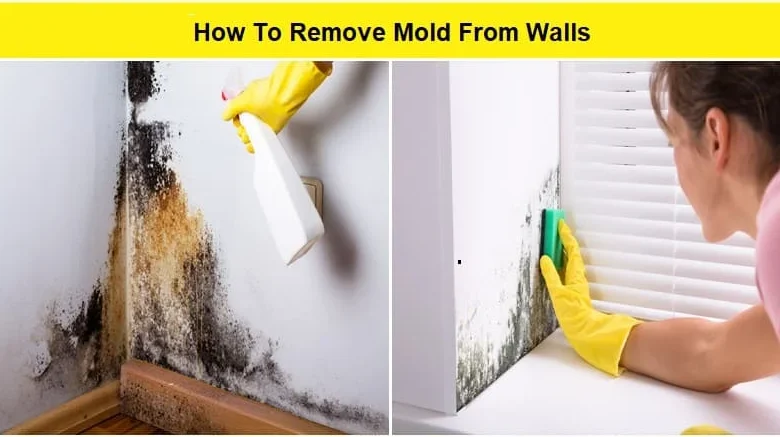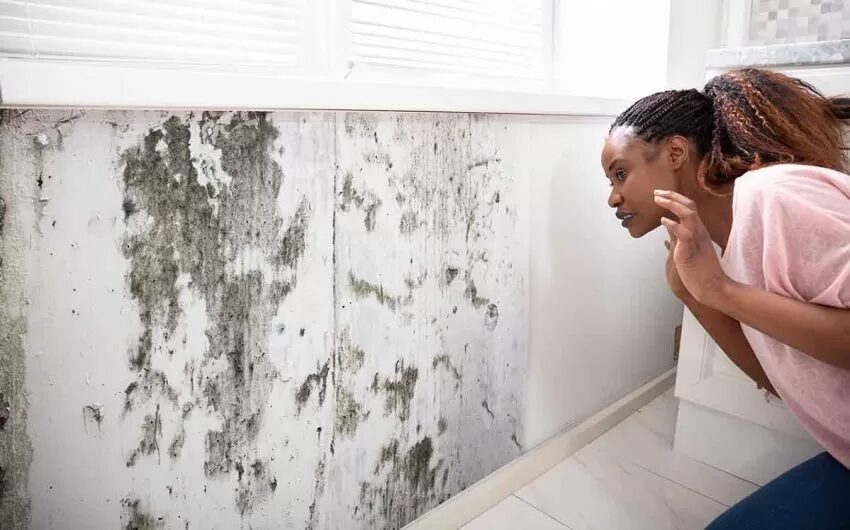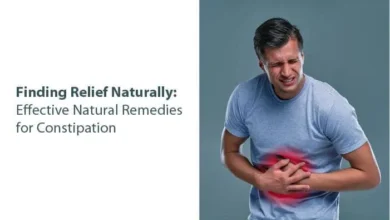How to remove mold from walls: easy tips and guide.

Find amazing tricks to how to remove mold from walls easily. Transform your home and breathe easier with our expert tips
Learn how to remove mold from walls today with our easy-to-follow guide. Get rid of mold and enjoy a fresh, clean home.
Discovering black spots creeping up your walls isn’t just unsightly – it’s downright alarming. Mold isn’t merely a cosmetic issue; it’s a subtle intruder that can compromise both your home’s structure and your family’s health. From triggering allergies to causing respiratory issues, the presence of mold demands immediate attention.
But before you panic or call in expensive professionals, there’s good news: many types of wall mold can be effectively tackled with the right knowledge and tools. Whether you’re dealing with a small patch in your bathroom or a more extensive problem in your basement, understanding the proper removal techniques is crucial for a safe and successful cleanup.
In this comprehensive guide, we’ll walk you through everything you need to know about mold removal – from identifying different types of mold to choosing between natural and chemical solutions, and knowing exactly when it’s time to call in the experts.
how to remove mold from walls. Let’s transform those moldy walls back to pristine condition, ensuring your home stays healthy and beautiful.

Identify the Type and Extent of Mold
Visual Inspection Techniques
- Use bright lighting to examine wall surfaces
- Look for discoloration patterns: black, green, brown, or white spots
- Check for bubbling paint or peeling wallpaper
- Inspect adjacent areas for spreading
Common Mold Types on Walls
| Mold Type | Appearance | Common Location |
|---|---|---|
| Black Mold | Dark green/black, circular | Damp bathrooms, basements |
| Aspergillus | White/gray, powdery | Indoor walls, AC units |
| Penicillium | Blue/green, fuzzy | Water-damaged walls |
| Alternaria | Brown/dark green, velvet-like | Window frames, damp walls |
Testing Methods for Mold Identification
- DIY testing kits available at hardware stores
- Tape lift sampling: Press clear tape against suspected areas
- Bulk sampling: Collecting small piece of affected material
- Professional lab testing for accurate species identification
Assessing Damage Severity
Evaluate the extent of mold growth using these criteria:
- Surface area affected (less than 10 sq ft is generally manageable DIY)
- Depth of penetration into wall material
- Presence of structural damage
- Location of growth (exterior vs. interior walls)
Now that you’ve identified the type and extent of mold, it’s crucial to take proper safety precautions before beginning the removal process. how to remove mold from walls.
Safety Precautions Before Removal
Required Protective Equipment
Before tackling any mold removal project, proper safety gear is essential. Here’s the essential protective equipment you’ll need:
- N-95 respirator mask or P-100 respirator
- Goggles without ventilation holes
- Long rubber gloves
- Disposable protective suit or old clothes
- Boot covers or old shoes
Room Ventilation Steps
Proper ventilation is crucial to prevent mold spores from spreading:
- Open all windows in the affected room
- Set up a fan pointing outward in one window
- Close all doors leading to other parts of the house
- Create negative air pressure by running the fan
- Consider using an air purifier with HEPA filter
Covering and Protecting Surrounding Areas
| Area to Protect | Recommended Material | Purpose |
|---|---|---|
| Floors | 6-mil plastic sheeting | Catch debris and spores |
| Furniture | Plastic drop cloths | Prevent contamination |
| Air vents | Plastic and tape | Block spore circulation |
| Doorways | Plastic barrier sheets | Contain work area |
Seal off the work area by taping plastic sheeting over doorways and vents. Remove or cover all furniture and belongings within six feet of the affected wall. how to remove mold from walls. Use painter’s tape to secure all protective coverings firmly in place.
Now that your workspace is properly secured and you’re safely equipped, we can explore the various natural cleaning solutions that effectively combat mold growth.
Natural Cleaning Solutions
Vinegar-based Cleaning Mixture

White vinegar’s natural antifungal properties make it an effective mold killer. Mix equal parts white vinegar and water in a spray bottle for a powerful cleaning solution.
Baking Soda Solutions
Create a paste using water and baking soda, or dissolve it in water for a spray solution. Both methods are effective for removing mold and absorbing excess moisture.
Tea Tree Oil Methods
Tea tree oil is a potent natural fungicide. Mix 1 teaspoon of tea tree oil with 1 cup of water for an effective spray solution.
Here’s a comparison of natural cleaning solutions: how to remove mold from walls.
| Solution | Effectiveness | Cost | Smell |
|---|---|---|---|
| Vinegar | High | Low | Strong |
| Baking Soda | Medium | Low | Neutral |
| Tea Tree Oil | Very High | High | Pleasant |
| Hydrogen Peroxide | High | Medium | Minimal |
Hydrogen Peroxide Applications
Use 3% hydrogen peroxide in a spray bottle. Key benefits include:
- Kills mold on contact
- Leaves no toxic residue
- Safe for most surfaces
- Acts as a natural bleaching agent
Essential Oil Combinations
Create powerful anti-mold blends using:
- 10 drops lavender oil
- 10 drops tea tree oil
- 5 drops clove oil
- 1 cup water
These natural solutions are particularly effective for small to medium-sized mold problems. For optimal results, allow these solutions to sit on the affected area for at least an hour before scrubbing. Now, let’s explore some chemical cleaning methods for more stubborn mold issues.
Table of Contents
Chemical Cleaning Methods
Commercial Mold Removers
how to remove mold from walls. When natural solutions aren’t enough, commercial mold removers offer powerful alternatives. These ready-to-use products contain specialized fungicides designed specifically for mold elimination. Here are the most effective types:
- Enzyme-based cleaners
- Hydrogen peroxide solutions
- Borax-enhanced formulas
- Antimicrobial sprays
Bleach-based Solutions
Bleach remains one of the most common chemical treatments for mold removal. Here’s a proper mixing guide:
| Solution Type | Bleach Amount | Water Amount | Best For |
|---|---|---|---|
| Light Mix | 1 cup | 1 gallon | Surface mold |
| Medium Mix | 1.5 cups | 1 gallon | Moderate growth |
| Strong Mix | 2 cups | 1 gallon | Severe cases |
Professional-grade Products
Professional-grade chemicals offer industrial-strength solutions for stubborn mold problems:
- Concrobium Professional
- BenzaRid
- Microban
- RMR-86
These products typically contain stronger active ingredients than retail options and require careful handling. Always wear protective equipment and ensure proper ventilation when using these solutions. Follow manufacturer instructions precisely for optimal results and safety.
Now that you understand the chemical options available, let’s look at the step-by-step process for effectively removing mold from your walls.
Step-by-Step Removal Process
Surface Preparation
Before tackling mold removal, proper surface preparation is crucial. Start by ventilating the area and covering nearby surfaces with plastic sheeting. how to remove mold from walls. Remove any loose debris or flaking paint from the affected wall using a wire brush or scraper.
Cleaning Application Techniques
Apply your chosen cleaning solution using these proven methods:
- Spray bottle application for vertical surfaces
- Sponge saturation for detailed areas
- Bottom-to-top application to prevent streaking
- Even coating with 6-8 inches overlap
Scrubbing Methods
Different surfaces require specific scrubbing techniques:
| Surface Type | Tool | Pressure Level |
|---|---|---|
| Painted Walls | Soft Brush | Light-Medium |
| Bare Drywall | Medium Brush | Light |
| Concrete/Brick | Stiff Brush | Medium-Firm |
| Bathroom Tile | Scrub Pad | Medium |
Drying Procedures
Proper drying is essential to prevent mold recurrence:
- Use fans to circulate air
- Position dehumidifiers strategically
- Keep windows open if weather permits
- Allow 24-48 hours for complete drying
- Check surfaces with moisture meter
Now that you’ve learned the proper removal techniques, let’s explore some effective prevention strategies to keep mold from returning.
Prevention Strategies
Moisture Control Methods
- Install proper waterproofing in basement walls
- Fix leaking pipes and faucets immediately
- Use dehumidifiers in prone areas
- Seal any cracks in foundation or walls
- Address water drainage issues around home exterior
Proper Ventilation Techniques
- Install exhaust fans in bathrooms and kitchens
- Open windows regularly for air circulation
- Use window fans strategically
- Consider whole-house ventilation systems
- Keep air vents unobstructed
Regular Wall Maintenance
| Maintenance Task | Frequency | Purpose |
|---|---|---|
| Visual inspection | Monthly | Spot early signs of mold |
| Clean walls | Quarterly | Remove dust and debris |
| Check caulking | Bi-annually | Prevent water infiltration |
| Paint touch-ups | As needed | Maintain protective barrier |
Humidity Monitoring Tips
- Keep indoor humidity levels between 30-50%
- Use hygrometers in multiple rooms
- Monitor seasonal humidity changes
- Check problem areas during weather changes
- Track readings in a moisture log
Maintaining proper humidity levels and implementing these prevention strategies is crucial for keeping your walls mold-free. Regular monitoring and maintenance can save thousands in potential remediation costs. Looking ahead, there are situations where professional intervention becomes necessary, despite your best prevention efforts.
When to Call Professionals
Signs of Extensive Damage
- Mold coverage exceeding 10 square feet
- Visible structural deterioration
- Water-damaged drywall or baseboards
- Discoloration extending into wall cavities
- Persistent musty odors despite cleaning
Health Risk Indicators
- Black or dark green patches (potential toxic mold)
- Respiratory symptoms among residents
- Allergic reactions that worsen over time
- Presence of mold in HVAC systems
| Risk Level | Symptoms | Professional Intervention |
|---|---|---|
| Low | Minor spots, no health issues | Optional |
| Moderate | Spreading patches, mild symptoms | Recommended |
| High | Large areas, health effects | Mandatory |
Insurance Considerations
- Document all mold damage with photographs
- Review homeowner’s policy for mold coverage limits
- Most policies cover mold resulting from sudden water damage
- Pre-existing mold conditions typically aren’t covered
- Professional assessment strengthens insurance claims
Professional remediation becomes necessary when mold infiltrates building materials or spans large areas. Experts have specialized equipment to detect hidden mold and proper containment systems to prevent spore spread. how to remove mold from walls. They can also perform comprehensive testing to identify toxic varieties and ensure complete removal. how to remove mold from walls.

While DIY methods work for minor issues, extensive mold problems require professional expertise to protect both your property and health. They’ll provide detailed remediation plans and documentation needed for insurance claims.
Now let’s explore preventive strategies to avoid future mold issues.
CONCLUTION
Tackling mold on your walls requires careful attention to safety, proper cleaning techniques, and the right cleaning solutions – whether natural or chemical-based. By following the outlined steps and maintaining proper ventilation, you can effectively remove existing mold and prevent future growth in your home.
Remember that while minor mold issues can be handled as a DIY project, extensive mold infestations require professional intervention.
how to remove mold from walls. Protect your health and home by regularly inspecting for moisture issues and addressing them promptly. Taking preventive measures today will help you maintain a healthy, mold-free living space for years to come.






